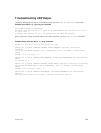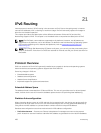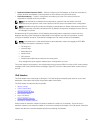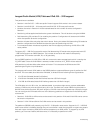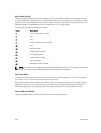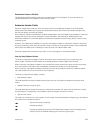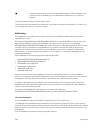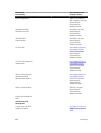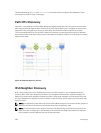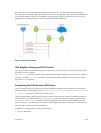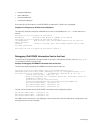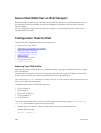
Static and Dynamic Addressing
Static IPv6 addresses are manually assigned to a computer by an administrator.
Dynamic IPv6 addresses are assigned either randomly or by a server using dynamic host configuration
protocol (DHCP). Even though IPv6 addresses assigned using DHCP may stay the same for long periods
of time, they can change. In some cases, a network administrator may implement dynamically assigned
static IPv6 addresses. In this case, a DHCP server is used, but it is specifically configured to always assign
the same IPv6 address to a particular computer, and never to assign that IP address to another computer.
This allows static IPv6 addresses to be configured in one place, without having to specifically configure
each computer on the network in a different way.
In IPv6, every interface, whether using static or dynamic address assignments, also receives a local-link
address automatically in the fe80::/64 subnet.
Implementing IPv6 with Dell Networking OS
Dell Networking OS supports both IPv4 and IPv6 and both may be used simultaneously in your system.
The following table lists the Dell Networking OS version in which an IPv6 feature became available for
each platform. The sections following the table give greater detail about the feature.
Feature and
Functionality
Documentation and
Chapter Location
Basic IPv6 Commands IPv6 Basic Commands in
the Dell Networking OS
Command Line Interface
Reference Guide.
IPv6 Basic Addressing
IPv6 address types:
Unicast
Extended Address Space
IPv6 neighbor discovery IPv6 Neighbor Discovery
IPv6 stateless
autoconfiguration
Stateless
Autoconfiguration
IPv6 MTU path discovery Path MTU Discovery
IPv6 ICMPv6 ICMPv6
IPv6 ping ICMPv6
IPv6 traceroute ICMPv6
IPv6 SNMP
IPv6 Routing
Static routing Assigning a Static IPv6
Route
IPv6 Routing
457



